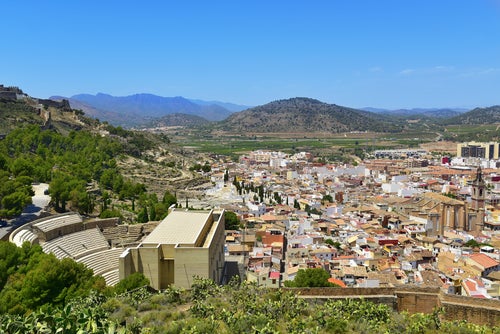To write a paean in praise of alcohol in relation to wine might seem both wrong-headed and ill-timed. Even before the UK Chancellor of the Exchequer Rishi Sunak’s last budget discriminated against wines containing more than 12% ABV—which is to say the overwhelming majority of wines worth drinking—it had become fashionable to lament the apparently ever-higher alcohol levels in wine. Jancis Robinson, in particular, has used her considerable reach to militate against the relentless march of C2H5OH.
The beau idéal?
The past is often used as a stick with which to beat the present here. In particular, the age of elegant red Bordeaux and Burgundy, and even Napa Cabernet, with alcohol levels no higher than 12 or 12.5%, is often invoked (and has been by the present writer). Wasn’t that the beau idéal, and isn’t the current era when Bordeaux and even Burgundy, not to mention Napa Cab, often tops 14.5% or even 15% ABV a time of decadence, and of climate anxiety?
Well, up to a point Lord Copper, as the obsequious foreign editor says to the ungainsayable proprietor in Evelyn Waugh’s Scoop. For a start, those lowish alcohol levels were the result of a number of factors we would now consider far from ideal. Maybe a new generation is forgetting that it used to be a struggle to ripen the classic varieties in their hallowed places of origin. Three or four decent vintages a decade was considered good going in both the Gironde and the Côte d’Or. Even the 12% or 12.5% ABV usually owed quite a bit to chaptalization.
Another factor was vine health. Many of the vines that produced those lower-alcohol California Cabernets, as Cory Empting told me recently, were virused. Vine health has improved, and that is not something we should lament. (By the way, Empting also said the alcohol level given on the label of California Cabs in the 1970s was often understated.)
I also feel there is a touch—just a touch—of Puritanism in the strictures on high alcohol levels in wine. I am talking more about a health-conscious Puritanism than a religious version, but the roots are the same. Certainly, I can’t imagine the poets who celebrated wine in the ancient world getting too worked up about an excess of the potent spirit that made wine a transformative substance. When my old friend Horace wrote his dithyramb to the power of Bacchus—above all the power to generate poetry through inspired intoxication, the ability to stand on a mountain-top and see the world in a new light—he was not thinking of the kind of product now marketed as “low-alcohol wine.”
Alcohol: The fiery essence of wine

For Swiss renaissance physician and philosopher Paracelsus, alcool or spiritus vini, the spirit of the wine, was a magical quasi-divinity. Image by iStock / Getty Images Plus
There is no word for alcohol in Latin or Greek. Alcohol is a noun of Arabic origin, though the twists and turn by which a term for black eye-liner—al-kuhl—came to designate the fiery essence of wine, what the Swiss renaissance physician and philosopher Paracelsus called alcool vini, still puzzle scholars. The Arabs were master distillers, so the word alembic is another Arabic word, even if one that, by another marvelous twist of etymology, incorporates the Ancient Greek word for a cup, ambix.
Nowadays, as Spanish philosopher Ortega y Gasset once remarked, alcohol is regarded as an administrative or socio-medical problem. But to the Ancients it was a god. For Paracelsus, who was an alchemist as well as a pioneering and empirically minded physician (who wrote a book on the diseases suffered by miners), alcool or spiritus vini, the spirit of the wine, was a magical quasi-divinity. As Jung explains, Paracelsus was living on the cusp of a new age, when old certainties (the unquestioned truth of Aristotelian philosophy and science and church dogma) were dissolving, with nothing solid to put in their place. Perhaps the world we are living in is not so different.
A balanced ripeness
Mention of Paracelsus brings to mind his famous saying, “only the dose makes the poison.” He realized that substances (especially metals) that were poisonous in larger quantities could be curative in small or tiny doses. So, one answer to what appears to be the problem of high-alcohol wines could be simply to consume them in smaller doses.
I am not entirely denying the problem of ever-higher alcohol in wine; this might apply especially to quaffing wines, where sipping slowly and meditatively is not necessarily of the essence. But what the most thoughtful winegrowers and makers tell me is that they above all seek balanced ripeness of all components, of which sugars are only one. To pick at a certain level of sugar ripeness when other constituents are not ripe is a recipe for unbalanced wines.
The other day we drank my last bottle of Château Capbern 2014. A case of this very good St-Estèphe cru bourgeois, made with the kind of care that would honor a cru classé, was one of my very best recent(ish) wine purchases. The September rains that diluted some 2014s largely bypassed St-Estèphe, and the Capbern is deliciously, almost chewably, rich. But there is also that robust earthy backbone that marks out many wines from the commune. I was quite surprised to see the alcohol level noted on the back label as 14%. But then I asked myself, is it a sin for cru bourgeois claret to taste so hedonistic?






